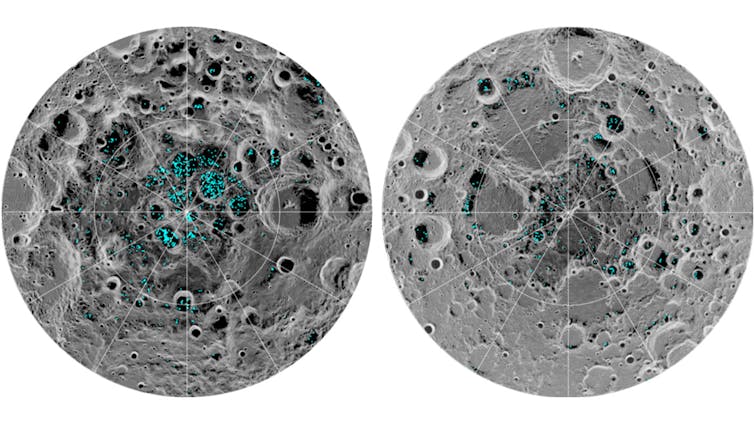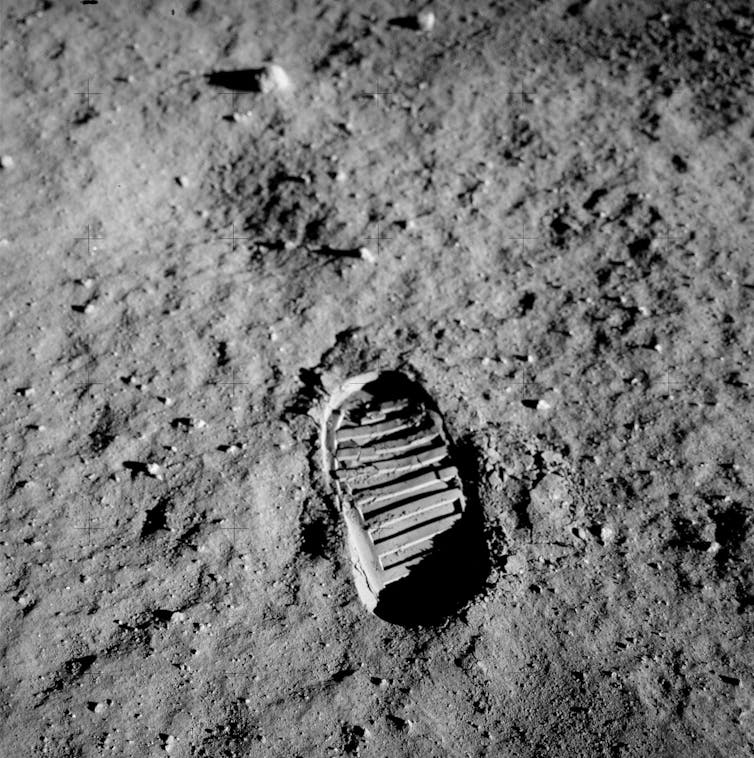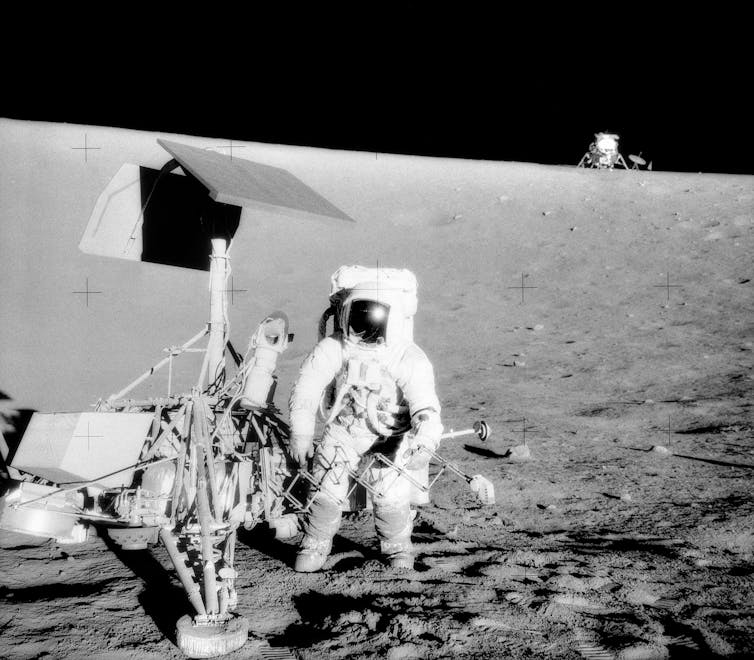It’s been 50 decades since humans last visited the Moon, and even robotic missions have been few and considerably in between. But the Earth’s only natural satellite is about to get crowded.
At least six nations around the world and a flurry of non-public businesses have publicly declared a lot more than 250 missions to the Moon to occur inside of the future ten years. Lots of of these missions consist of ideas for everlasting lunar bases and are motivated in significant aspect by ambitions to evaluate and get started using the Moon’s purely natural methods. In the short expression, means would be made use of to assistance lunar missions, but in the extensive expression, the Moon and its sources will be a essential gateway for missions to the broader riches of the solar system.
But these lofty ambitions collide with a looming authorized query. On Earth, possession and possession of organic resources are based on territorial sovereignty. Conversely, Article II of the Outer Area Treaty – the 60-calendar year-outdated settlement that guides human activity in area – forbids nations from professing territory in space. This limitation involves the Moon, planets and asteroids. So how will room sources be managed?
I am a law firm who focuses on the peaceful and sustainable use of area to advantage all humanity. I think the 2020s will be acknowledged as the decade human beings transitioned into a definitely place-faring species that utilizes area assets to endure and prosper both in place and on Earth. To guidance this long term, the global community is performing by various channels to produce a framework for place resource administration, starting off with Earth’s closest neighbor, the Moon.

NASA
Lunar missions for lunar sources
The U.S.-led Artemis Plan is a coalition of commercial and global companions whose initial intention is to return human beings to the Moon by 2024. In the end, the approach is to build a extensive-time period lunar foundation. Russia and China have also declared ideas for a joint Worldwide Lunar Investigate Station and invited intercontinental collaboration as well. Numerous private missions are also underneath advancement by providers like iSpace, Astrobotic and a handful of many others.
These missions intention to ascertain what methods are truly accessible on the Moon, where by they are located and how difficult it will be to extract them. Now, the most important of these methods is drinking water. H2o can be uncovered mostly in the type of ice in shadowed craters in the polar areas. It is required for consuming and escalating meals, but when break up into hydrogen and oxygen, it can also be made use of as gasoline to electrical power rockets possibly returning to Earth or traveling over and above the Moon.
Other precious means on the Moon consist of scarce Earth metals like neodymium – used in magnets – and helium-3, which can be utilized to make vitality.
Present-day research suggests that there are only a handful of modest parts of the Moon that comprise both h2o and uncommon Earth aspects. This focus of methods could pose a dilemma, as quite a few of the planned missions will probable be headed to prospect the similar spots of the Moon.

NASA/Buzz Aldrin
A dusty concern
The last human on the Moon, Apollo 17 astronaut Eugene Cernan, termed lunar dust “a single of the most aggravating proscribing sides of the lunar surface.” The Moon is covered by a layer of good dust and modest, sharp rock fragments identified as regolith. Since there is practically no atmosphere on the Moon, regolith is very easily blown about when spacecraft land or drive on the lunar area.
A portion of the 1969 Apollo 12 mission was to provide items of Surveyor 3 – a U.S. spacecraft that landed on the Moon in 1967 to review its floor – again to Earth. The Apollo 12 lunar module landed 535 toes away from Surveyor 3, but on inspection, engineers found that particles blown by Apollo 12 exhaust punctured the surface area of Surveyor 3, pretty much embedding regolith into the components.
It’s not tough to picture a lander or even a area rover of a person state passing way too near to an additional country’s spacecraft and producing significant problems.

NASA/Alan L. Bean
A have to have for policies
As efforts to return to the Moon commenced ramping up in the 2000s, NASA was so worried by the destructive prospective of lunar dust that in 2011 it issued a set of tips to all place-faring entities. The purpose was to secure Apollo and other U.S. objects on the lunar floor that are of historical and scientific worth. The recommendations put into action “exclusion zones,” outlined by NASA as “boundary parts into which browsing spacecraft really should not enter.” These suggestions are not enforceable in opposition to any entity or nation until they are contracting specifically with NASA.
The very concept of these zones violates the basic indicating and intent of Posting II of the Outer Area Treaty. The post states that no spot of house is matter to “national appropriation” by “means of use or occupation.” Generating an exclusion zone about a landing or mining web site surely could be considered an occupation.
Nonetheless, the Outer Room Treaty does provide a opportunity answer.
Worldwide actions
Short article IX of the Outer Area Treaty calls for that all activities in place be performed “with owing regard to the corresponding interests of other folks.” Underneath this philosophy, many nations are at this time doing the job towards collaborative use of area resources.
To date, 21 nations have agreed to the Artemis Accords, which use the thanks regard provision of the Outer Room Treaty to assistance the enhancement of “notification and coordination” zones, also called “safety zones.” When 21 nations is not an insignificant selection, the accords do not at this time involve the important room-faring nations of China, Russia or India.
In June 2022, the United Nations Committee on the Peaceful Uses of Outer Place formed the Functioning Group on Lawful Features of Space Resource Routines. This group’s mandate is to produce and advocate concepts about the “exploration, exploitation and utilization of house sources.” When the team has nevertheless to tackle substantive matters, at the very least 1 country not in the Artemis Accords, Luxembourg, has previously expressed an desire in promoting security zones.
This doing work team is a perfect avenue as a result of which basic safety zones like those people outlined in the Artemis Accords could get unanimous international assist. For All Moonkind, a nonprofit business I launched that is composed of area industry experts and NASA veterans, has a mission to assist the institution of protecting zones all-around web sites of historic significance in area as a 1st version of security zones. Whilst initially pushed by the aggravating lunar dust, security zones could be a commencing point for the improvement of a functional technique of useful resource and territory management in room. These an motion would protect crucial historic sites. It could also have the added advantage of framing useful resource management as a resource of conservation somewhat than exploitation.










More Stories
Family Immigration Attorney: Navigating Complex Processes with Ease
Trusted Immigration Attorney in Dallas
Baltic States respond to Chinese diplomat who questioned sovereignty of post-Soviet states